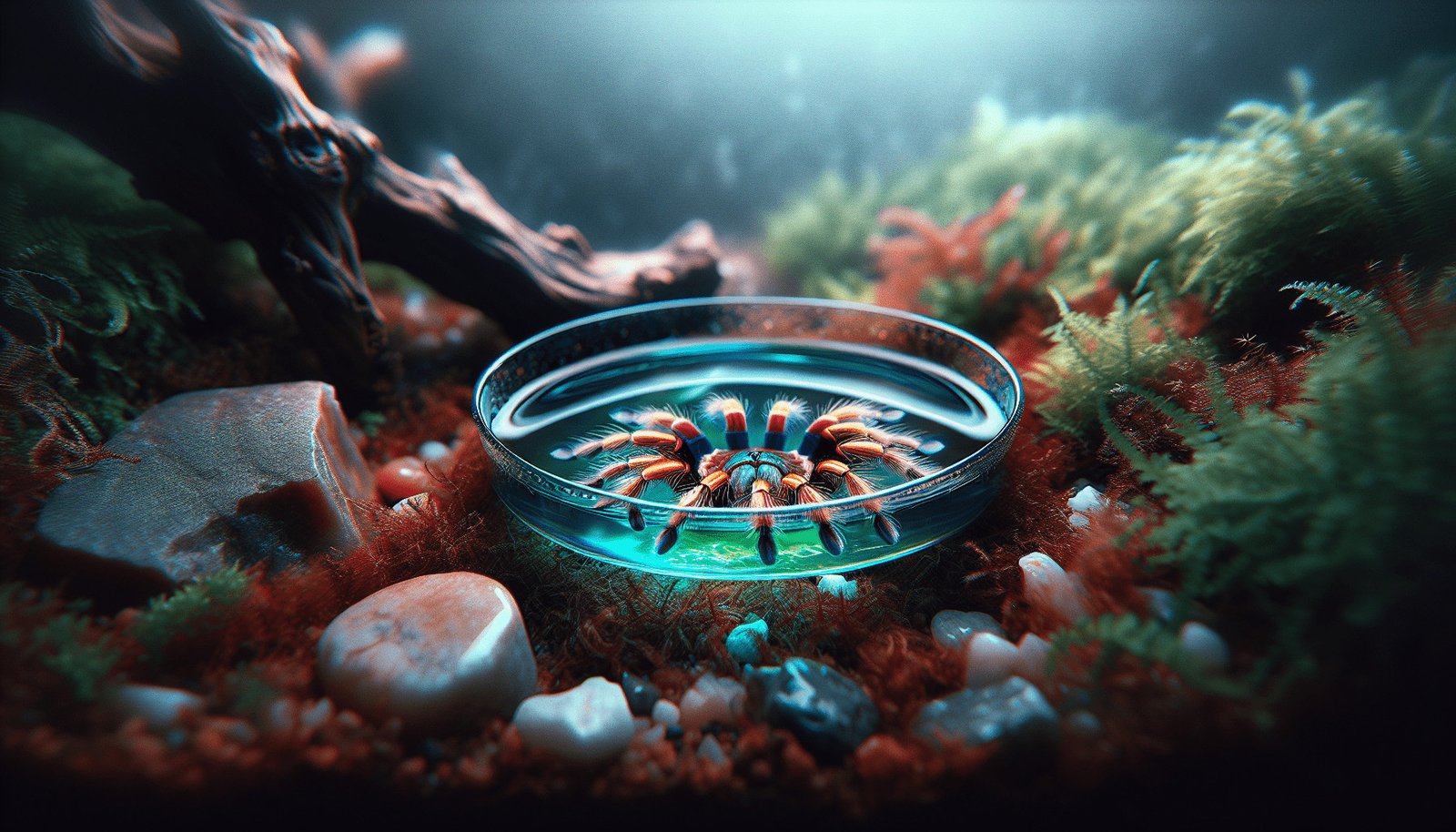Have you ever wondered how often you should clean your tarantula’s water dish? This question might not frequently cross your mind, but it’s an important aspect of tarantula care. Just like any other pet, your tarantula deserves a clean and healthy environment, and this includes having fresh water available. Taking good care of your tarantula means knowing when and how to maintain their living conditions, with a particular focus on their water supply.
Why Is Regular Cleaning Important?
When caring for a tarantula, understanding their basic needs is crucial. Although tarantulas are low-maintenance pets compared to many others, a few key aspects of their care should never be neglected. One of these is the cleanliness of their water dish. Each tarantula is unique, and their care needs can vary depending on species, climate, and habitat, but fresh and clean water is consistently important.
Health Concerns
Dirty water can quickly become a breeding ground for bacteria and algae, which can lead to various health issues for your tarantula. Contaminated water might cause infections or influence your tarantula’s hydration, leading to serious health problems. Tarantulas are generally hardy creatures, but maintaining a pathogen-free environment is essential for their longevity and well-being.
Promoting Hydration
Like all living creatures, tarantulas require water to thrive. Even if they don’t frequently drink, having access to clean water is crucial. Tarantulas can absorb moisture from their surroundings through the air, and one method they do this is by drinking water. A tarantula with access to fresh water can stay well-hydrated, which is particularly important during molting when they might require more moisture.

The Right Water Dish
Choosing the appropriate water dish is as important as keeping it clean. Selecting the right dish helps avoid unnecessary accidents and maintenance issues.
Size and Type
A shallow but sturdy water dish is generally recommended for tarantulas of all sizes. This helps prevent accidental drowning, especially with smaller species. Also, ensure the dish is heavy enough that the tarantula cannot easily tip it over. Ceramic or glass dishes are excellent options since they’re easy to clean and less likely to move around the enclosure.
Location in the Enclosure
The placement of the water dish should be strategic. It’s a good idea to place the dish away from the main hiding spot but accessible enough for your tarantula to find it easily. Proper placing ensures that substrate or uneaten food doesn’t easily fall into the dish, keeping it cleaner for longer.

How Often Should You Clean the Water Dish?
This topic brings us back to the central question: how often should you be cleaning the water dish? Ideally, you should be looking to do this with regular frequency, but how regular exactly?
General Cleaning Schedule
A good routine to establish is cleaning the water dish once a week. This frequency strikes a balance between giving your tarantula consistent access to clean water and maintaining a low-maintenance care routine for you. During this weekly cleaning, ensure to fully empty, scrub, and rinse the dish before refilling it with fresh water.
Exceptions to the Rule
Certain circumstances may require you to clean the dish more frequently. Consider a mid-week quick clean if you notice:
- Cloudy Water: Indicating algae or bacterial growth.
- Substrate in the Water: Naturally happens due to tarantula activity.
- Food Particles: Any remnants that might spoil and contaminate the water.
Monitoring and Adjusting
Pay close attention to the overall cleanliness and watch your tarantula’s behavior. Some tarantulas might use the water dish more regularly, and in those cases, a more frequent cleaning schedule might be necessary. Adjust your maintenance routine accordingly to suit the specific needs of your tarantula.

Effective Cleaning Techniques
Now that the frequency is clear, the next step is knowing how to clean the dish effectively. Proper cleaning ensures that no harmful residues are left behind that could affect your tarantula.
Step-by-Step Cleaning Guide
-
Empty the Dish: Remove old water entirely. Avoid pouring it into the enclosure or on the substrate if possible, as this could increase humidity levels unnecessarily.
-
Scrub the Dish: Use a small brush dedicated to this task to scrub the inside and outside of the dish. Giving it a thorough clean removes any buildup of algae, slime, or residue.
-
Rinse Really Well: Ensuring there are no traces of soap (if used) is important. Use warm water to rinse thoroughly, removing any remnants of cleaning agents.
-
Dry the Dish: Let the dish air dry to avoid leaving any lint or debris if drying with a cloth. Alternatively, a paper towel can be used for quicker drying.
-
Refill with Fresh Water: Use clean, safe tap or bottled water. Avoid using distilled water as it lacks necessary minerals. Ensure the water is at room temperature to avoid any temperature shock.
Safety Precautions
- No Harsh Chemicals: Avoid using strong cleaning agents or bleach as these can leave residues harmful to your tarantula.
- Dedicated Tools: Keep brushes and towels specifically for this task to prevent cross-contamination with other chemicals.

Consequences of Not Keeping Up
Failing to maintain the water dish can lead to avoidable issues. It’s worth considering the effects that could occur if this regular part of tarantula care is neglected.
Impact on Tarantula’s Health
A dirty water dish can lead to bacterial infections, dehydration, or stress for your tarantula if they don’t have access to clean hydration.
Enclosure Maintenance
Neglecting the water dish can also lead to more significant issues with the overall enclosure cleanliness. Unchecked water spills can alter humidity levels, affecting your tarantula’s comfort and habitat suitability.

Conclusion
The regular maintenance of your tarantula’s water dish ensures that your pet continues to thrive in a healthy environment. Establishing a weekly cleaning schedule, with spot cleaning as necessary, allows you to offer your tarantula a comfortable home with access to fresh water. Through this care practice, you’re contributing positively to your tarantula’s well-being and longevity. Remember, a little routine maintenance goes a long way in pet care.